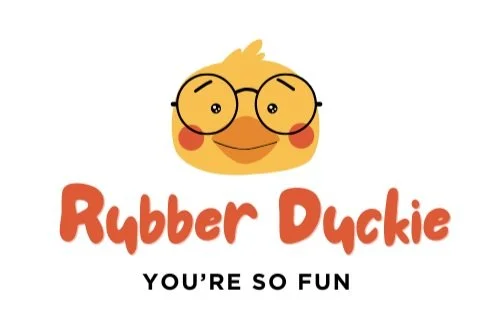Explaining My Code to a Rubber Duck Like I’m on Shark Tank
Because duck debugging is cheaper than therapy
Picture this: I’m hunched over my laptop, emotionally unraveling in a sea of broken logic. The bug isn’t new. It’s been haunting me for hours. Coffee’s cold. Red Bull is room temperature. Sanity’s slipping. Desperation sets in.
So I do what any self-respecting developer does:
I grab my trusty yellow rubber duck and start pitching my code like I’m on Shark Tank.
“So here’s the problem, Mr. Duck. I’m iterating over this array, filtering the results, then mapping it to a new array. But for some reason, the output is still undefined. I’m asking for $0 and a little emotional support.”
Welcome to the magical, chaotic world of rubber duck debugging—where breakthroughs happen, breakdowns are verbalized, and the duck never judges you.
What Is Rubber Duck Debugging?
If you’re new to this concept:
Rubber duck debugging is the act of explaining your code line-by-line out loud (often to an actual rubber duck or inanimate object) in order to understand what the heck is going wrong.
It works because:
You’re forced to slow down and articulate your logic
You often realize what’s wrong mid-sentence
It’s harder to lie to a duck than it is to yourself
It’s named after a legendary software engineer who carried a duck around the office and debugged problems by talking to it. It’s part logic tool, part emotional support, and part accidental stand-up routine.
Why It Feels Like Shark Tank
There’s something about talking to an unblinking audience that makes you explain things better.
When I’m talking to my rubber duck (his name is Kevin, thanks for asking), I fall into full “pitching to investors” mode:
“What I have here is a React component. It’s reusable, clean, and 90% bug-free. Now, I know what you’re thinking: why is the state undefined? Great question, Kevin.”
Suddenly, I’m noticing things I missed.
That missing return.
The scope error.
The mutation in an array that should’ve been immutable.
Kevin tilts silently. He knows.
Benefits of Duck Debugging (Besides Feeling Less Alone)
🧠 You think clearer when you talk out loud.
Something about verbalizing logic rewires your brain to spot holes you couldn’t see before.
🐤 You don’t get interrupted.
The duck doesn’t say, “Have you tried turning it off and on again?” He just listens.
📉 You reduce dependency on coworkers.
Don’t Slack Karen until you’ve spoken to the duck. Karen is busy. Kevin is not.
💥 You feel like a genius when you suddenly fix it.
Mid-sentence clarity? That’s dev euphoria.
How to Start Your Duck Debugging Journey
Get a duck. (Real, rubber, plush, emoji on a sticky note—your call.)
Place it next to your screen. Let it stare into your soul.
Explain your code out loud like you’re demoing to a board of investors.
Listen to yourself. You’ll probably solve it halfway through.
Thank the duck. Praise its unwavering support. Carry on.
Bonus points if your coworkers overhear and slowly back away.
You don’t need a full team of engineers to find the bug. Sometimes you just need to pitch your broken logic to a $2 duck from Target like you’re demoing the next big App.
Because duck debugging is real.
It’s simple.
It’s effective.
And let’s be honest—it’s cheaper than therapy and more supportive than half the internet.
So next time your code won’t cooperate?
Take a deep breath.
Turn to your duck.
And say, “Let me walk you through this disaster.”
Chances are, you’ll walk yourself right into the solution.



